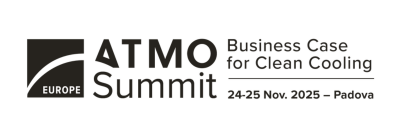
Efficiency, comfort, and sustainability: ATMO Europe 2025 looks to the future of natural cooling.
The fifteenth edition of ATMO Europe is preparing to bring to Padua the most current debate in the HVAC&R sector: how to reconcile technological evolution with the urgent need to reduce environmental impact and the use of harmful substances.
The event, which will bring together experts, institutions, and companies from across Europe, will offer a comprehensive overview of strategies for decarbonizing the cold chain and improving the efficiency of increasingly integrated air conditioning and refrigeration systems.
Innovation and regulations: the key role of natural refrigerants
Among the most anticipated topics is the debate on European policies regarding PFAS, the per- and polyfluoroalkyl substances at the center of future restrictions. The goal will be to understand how evolving regulations will impact the design, choice of materials, and development of new systems.
At the same time, attention will be focused on solutions based on low-impact natural refrigerants, such as CO₂ and hydrocarbons, which today represent the technical benchmark for an increasingly sustainable industry.
Focus on data centers and emerging technologies
One of the main innovations of the 2025 edition will be the introduction of a dedicated focus on data center cooling, a rapidly expanding sector that shares many challenges with the HVAC world: service continuity, energy efficiency, and emissions reduction.
The latest research and applications in caloric cooling and innovative "refrigerant-free" solutions will also be presented, opening up new perspectives for low-consumption, highly reliable systems.
A meeting opportunity for the entire supply chain
ATMO Europe 2025 thus confirms its role as a strategic event for designers, installers, manufacturers, and supply chain operators who want to anticipate market trends and understand how innovation can redefine the standards of comfort and sustainability.
An event that looks not only at refrigeration, but at the entire HVAC&R ecosystem, where efficiency, safety, and environmental protection become part of a single shared technological language.





